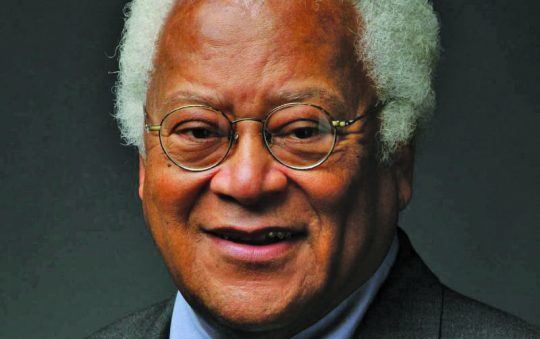Los Angeles County officials voted today to spend roughly $300 million on a major redesign of its voting system in anticipation of the 2020 presidential election, even as an independent consultant investigates a glitch in the existing process that led to nearly 120,000 voters being left off polling place rosters last week.
The new system, which has an electronic interface at the polling place but generates a paper ballot for record keeping, is part of a broader update that includes allowing voters to cast a ballot over an 11-day period prior to and including Election Day.
The county will also do away with assigning traditional polling places and instead allow voters to drop in at any vote center convenient to them.
The overall goal is to increase engagement and access, by making voting easier, as well as to ensure system security, Registrar-Recorder/County Clerk Dean Logan told the board.
While not a panacea for all issues and concerns, … this new voting model and the systems that support it will significantly reduce the likelihood of error and disruption in the voting process and will increase our ability to appropriately and quickly triage such occurrences,” Logan said.
Errors are definitely on the mind of the board members moned Logan last week to question him about a printing error that forced poll workers volunteering for the June 5 primary to hand out provisional ballots to many residents whose names should have appeared on county rosters.
Entire blocks of addresses from single streets were somehow and voting rights advocates worried that some voters may have walked away without casting a ballot.
This spending is unrelated to that problem, which the county is hiring a third-party agency to investigate.
The snafu affected the voter rolls at 1,530 of the 4,357 precinct locations. A total of 118,522 voters’ names — roughly 2 percent of registered voters — were omitted from the lists, according to the county.
As for the new system, Logan said his office is “pushing hard” to have it in place by the 2020 presidential election.
“There’s nothing on the market that meets the needs of a jurisdiction like this,” Logan said.
One component will support the ability to verify registration status in real time. To accommodate a diversity of voters, residents will be able to choose a ballot and voting instructions in whatever language they prefer. Other conveniences will include same-day voter registration and vote-by-mail drop boxes set up across the county.
Supervisor Kathryn Barger worried about the loss of public faith in the system.
“I, unfortunately, think that the national dialogue has undermined the public trust in our democratic election process on a broad scale,” Barger said. “And I’m concerned that the events of last week are going to further erode that public confidence.”
However, Barger expressed hope that this new investment would move the county forward.
Supervisor Janice Hahn asked whether the new system would be equipped to evolve along with voter populations and other changes likely to occur through 2033. A $282 million contract with Smartmatic USA Corporation covers the cost of renewal options through that year. Another $12 million agreement with Digital Foundry, Inc. covers tabulation of ballots through 2020.
“$300 million is a lot of money,” Hahn said.
Logan promised that the system would be agile enough to adapt to legal, demographic and behavioral changes over what he hoped would be the next 50 years.
Supervisor Mark Ridley-Thomas took a moment to remind Logan that people don’t like the idea of provisional ballots.
“It makes it feel like voting is provisional rather than constitutional,” Ridley-Thomas said, adding that he hoped news of the upgrade, under development since 2012, would let residents know “we mean business in securing and protecting their constitutional right to vote.”
Last Wednesday, county elections officials estimated that about 141,000 provisional ballots from last Tuesday’s election still needed to be tabulated. On Friday, Logan’s office issued its first ballot-counting update, having tabulated 83,267 ballots since Election Day.
According to the county, the number of outstanding provisional ballots left to be counted as of Friday was 139,050, along with 296,380 mail-in ballots and 3,970 miscellaneous ballots.
Another update this evening shows 128,000 provisional ballots still to be counted, along with 170,000 mail-in ballots and 600 miscellaneous ballots. The total election results count is now 1,180,472, which is nearly 23 percent of eligible Los Angeles County voters.
The next update is scheduled for Friday and final certification is tentatively scheduled for June 29.






